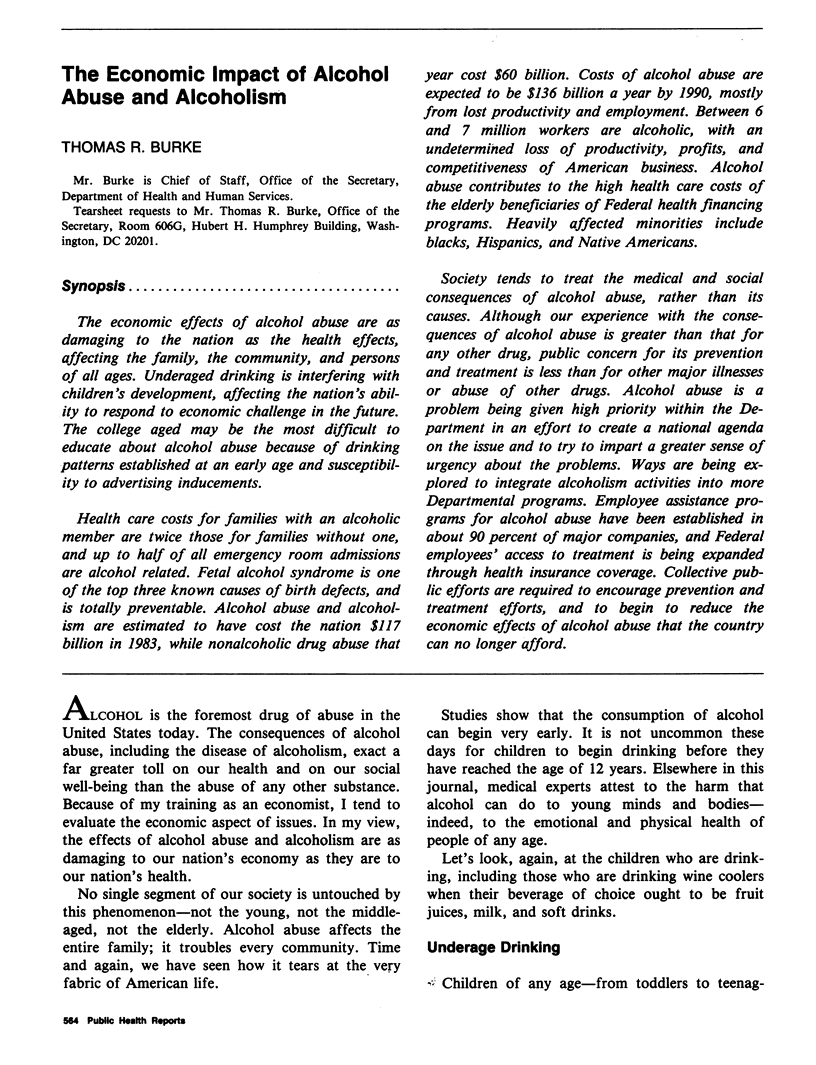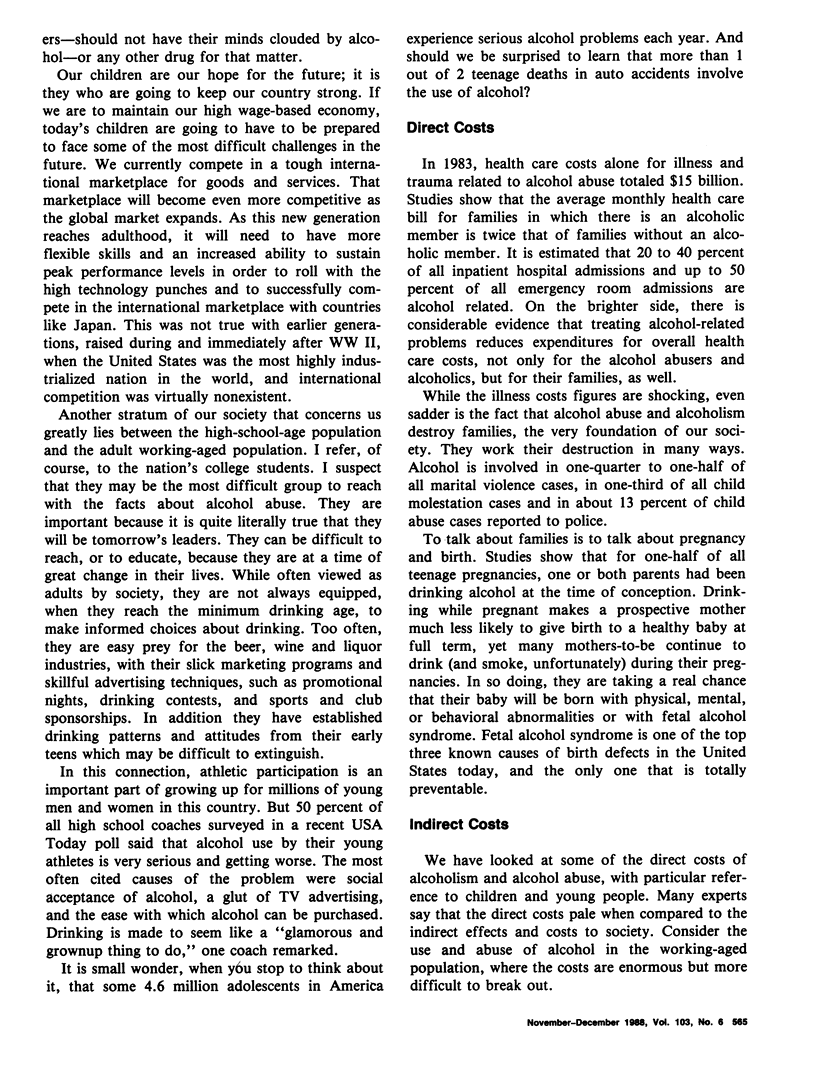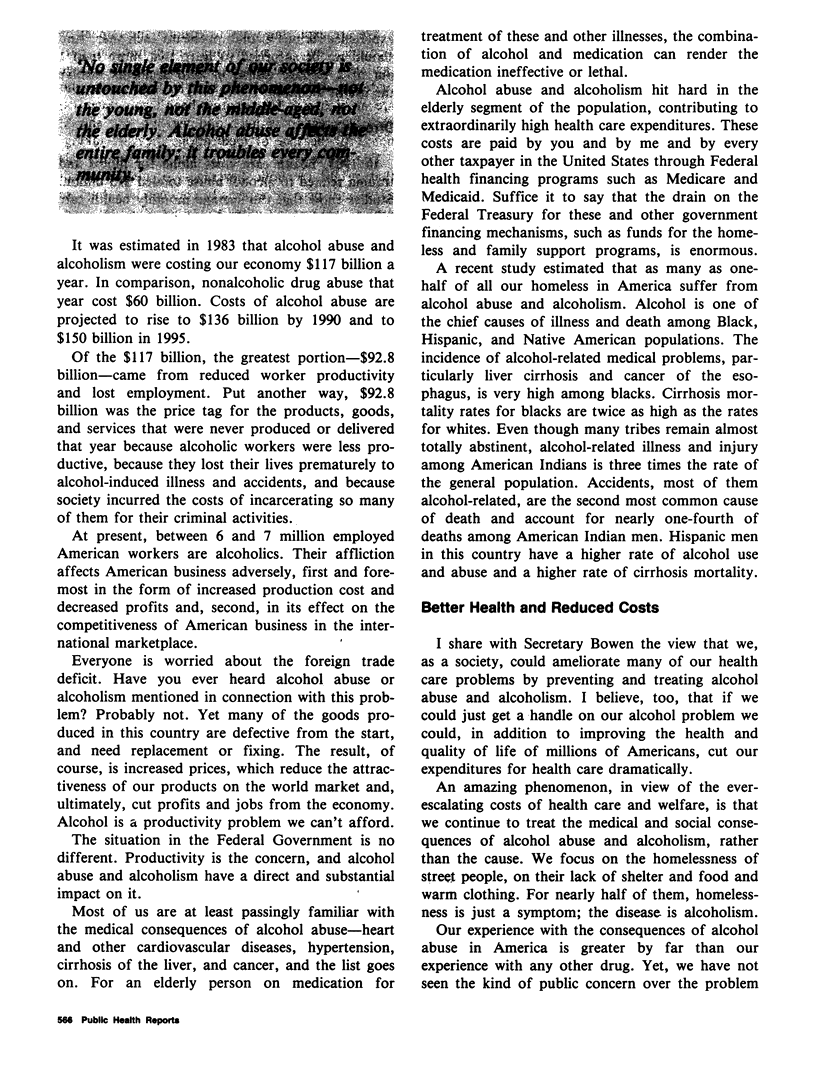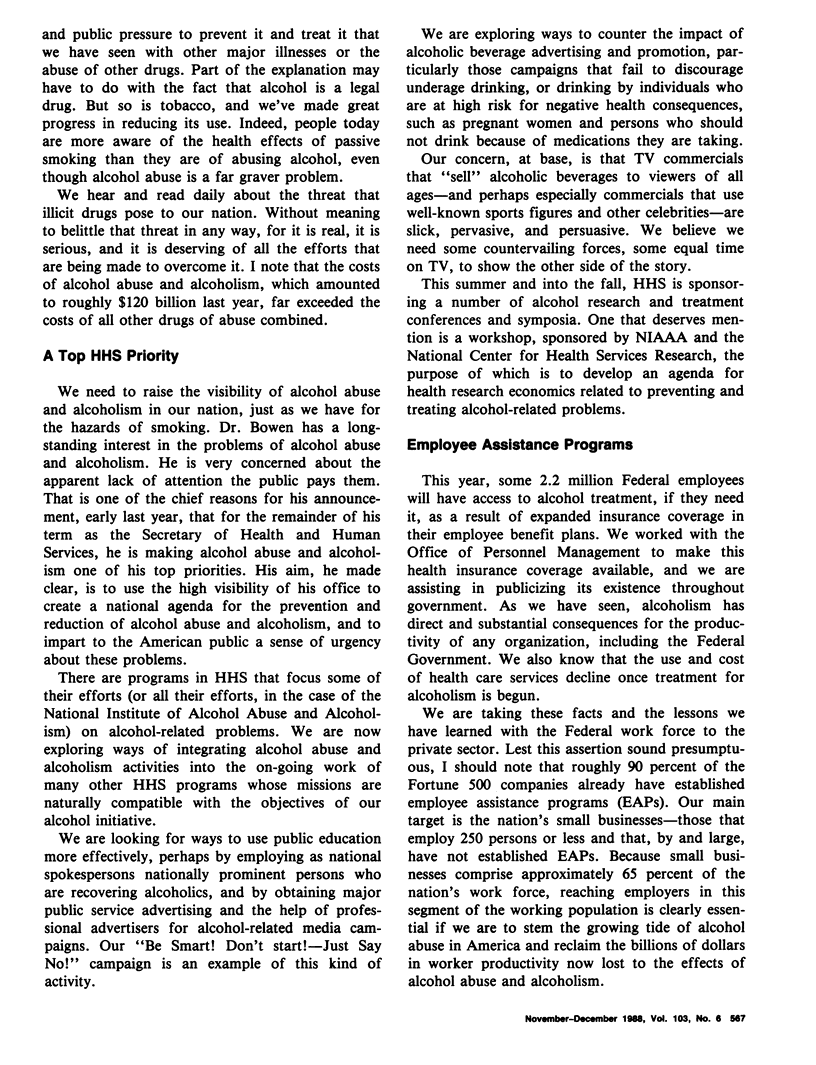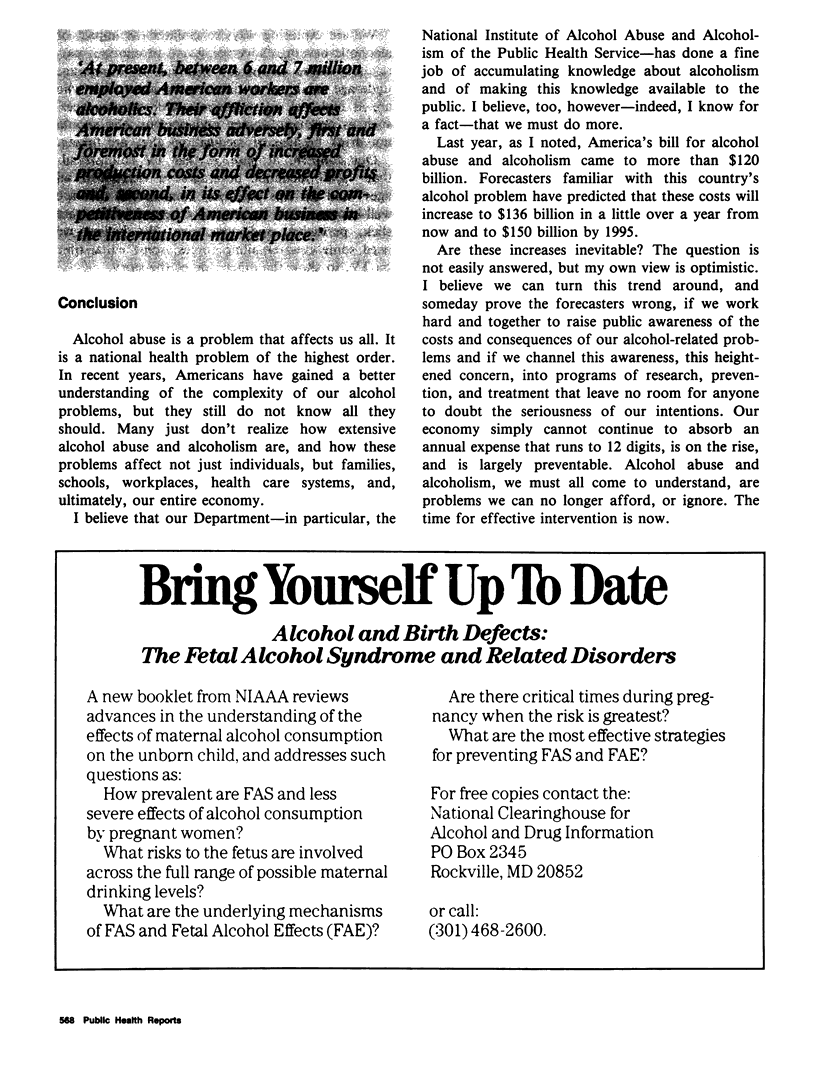Abstract
The economic effects of alcohol abuse are as damaging to the nation as the health effects, affecting the family, the community, and persons of all ages. Underaged drinking is interfering with children's development, affecting the nation's ability to respond to economic challenge in the future. The college aged may be the most difficult to educate about alcohol abuse because of drinking patterns established at an early age and susceptibility to advertising inducements. Health care costs for families with an alcoholic member are twice those for families without one, and up to half of all emergency room admissions are alcohol related. Fetal alcohol syndrome is one of the top three known causes of birth defects, and is totally preventable. Alcohol abuse and alcoholism are estimated to have cost the nation $117 billion in 1983, while nonalcoholic drug abuse that year cost $60 billion. Costs of alcohol abuse are expected to be $136 billion a year by 1990, mostly from lost productivity and employment. Between 6 and 7 million workers are alcoholic, with an undetermined loss of productivity, profits, and competitiveness of American business. Alcohol abuse contributes to the high health care costs of the elderly beneficiaries of Federal health financing programs. Heavily affected minorities include blacks, Hispanics, and Native Americans. Society tends to treat the medical and social consequences of alcohol abuse, rather than its causes. Although our experience with the consequences of alcohol abuse is greater than that for any other drug, public concern for its prevention and treatment is less than for other major illnesses or abuse of other drugs.(ABSTRACT TRUNCATED AT 250 WORDS)
Full text
PDF